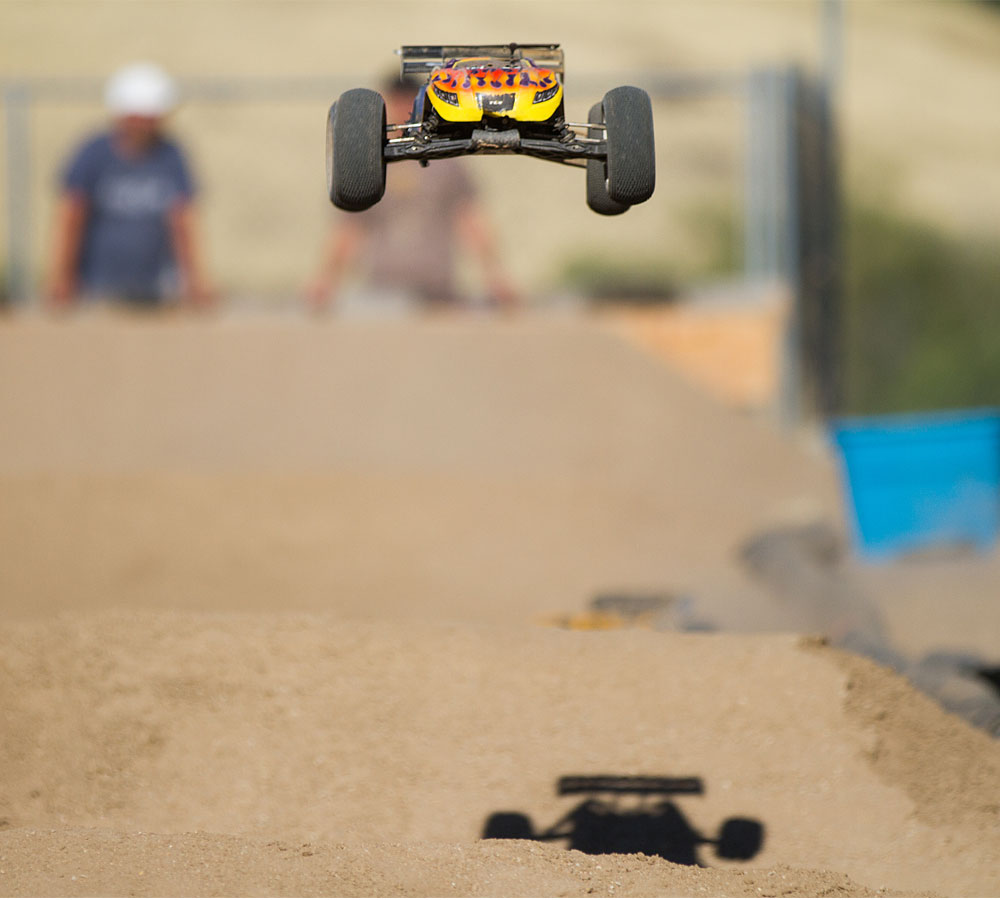Basics of RC Jumping
Posted by RC Hobbies Outlet on 26th Mar 2021
Jumping your RC vehicle off a ramp or a hill, can be an exciting and fun skill to master. While getting your RC to jump may appear to be easy, it takes some practice to become a skilful jumper, and avoid damaging your vehicle.
Choose The Right Vehicle
For RC jumping you will need a RC vehicle that has a stronger suspension and more ground clearance such as an RC buggy or truck. An on-road RC car is not suitable for jumping.
You will need to learn the particular jump characteristics of your vehicle as this will vary by vehicle.
A bad landing can damage your vehicle, so you will want to be careful to build up your skill slowly and minimize the risk of damaging your vehicle.
Build A Stable Ramp
Before you start your jumps, make sure you build a stable ramp. A piece plywood at least 2-3 feet wide and at least 2 feet long is a good size you want it to be easy to drive onto (too narrow may result in driving off the side of the ramp) and you want to be adjustable so that you can start with a small angle and then increase the angle as your jump skills improve.
The ramp should be on a level surface, and be secured so that it does not move when the vehicle drives on it.
The landing area should be grass or a reasonably level soft surface to reduce the risk of damaging your vehicle. You should also ensure that there are no objects, animals or people that could be hit while you are doing your jumps.
Stay in Control
The key to a successful jump is controlling the RC vehicle while it is in the air, so that to the degree possible, it lands on all 4 wheels. If the vehicle lands nose first, back first, or on a corner, damage to the vehicle can result. A good landing should be the objective of every jump.
The higher the speed and the sharper the angle of the ramp, the higher and further the RC vehicle will jump, but also the harder the vehicle will land – and if the landing is bad, the more likely it will be damaged. Once you are experienced, the optimum ramp angle is between 30 and 40 degrees – we recommend against using angles greater than 45 degrees.
Starting Off
You may want to firm up the suspension a bit by tightening the spring tension or using a higher viscosity shock oil (especially the back suspension). You want the suspension to be soft enough to absorb most of the landing shock, but not bottom out too easily. You also want to avoid the chassis bottoming out as you go up the ramp.
Adjust your ramp so that it is at about a 10% angle. Approach the ramp at just over 50% throttle and keep it as square to the end of the ramp as possible.
After you have improved your in-air control and landings, and become familiar with the jump characteristics of your vehicle, you can slowly increase your speed and then the angle of the ramp.
In Air to Landing
After your RC vehicle has cleared the ramp, reduce the throttle.
When your RC vehicle is airborne you will need to control the level of the vehicle while it is in the air. The wheels of the RC vehicle act like a rotational gyroscope to allow you to control the level. You can do this by increasing the throttle to raise the nose if the nose is pointing down, or reducing the throttle or tapping the brake if the nose it pointing up. The amount of throttle or brake you use depends on the amount of correction needed.
When you get more experienced you can also use steering and throttle together to raise a corner if one corner is lower. Steer into the front corner of the RC vehicle you want to correct and apply the appropriate throttle response. However, be sure the wheels are straight when you land.
As you land, you should apply some throttle {but NOT full throttle) to minimize the shock of landing to the drive train. Failure to do this can result in damage to your drive shafts and differentials, especially if you land with the brake applied.
Landing on all four wheels protects your vehicle and is important for the longevity of your RC. Failing to land properly can cause considerable damage, so it’s important to practice a smooth landing to protect your vehicle.
Regular Maintenance
Suspension movement will allow you to steer the vehicle, handle the jumps and improve the overall stability of your RC. Routinely check your RC suspension for binding and check the shocks to ensure all parts move freely.
For more tips on jumping you can read our blog here.
Browse through our selection of RC Buggies here and our RC trucks here

